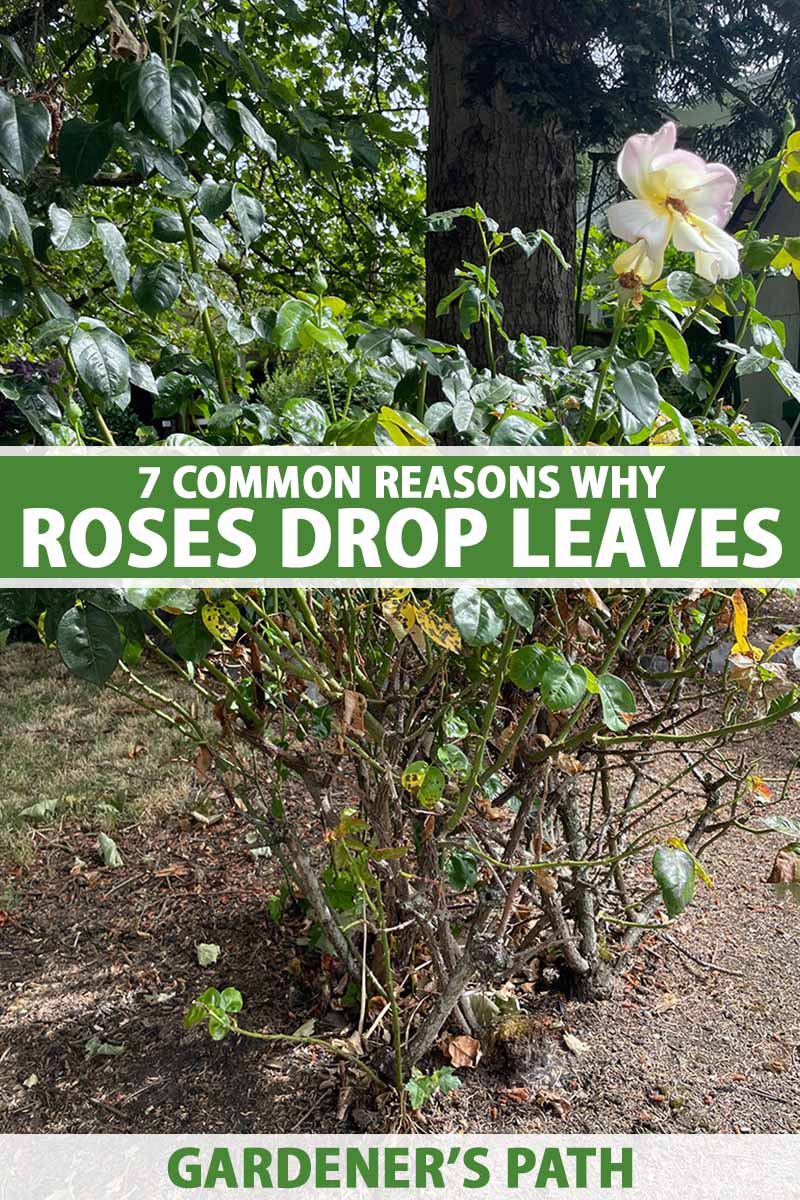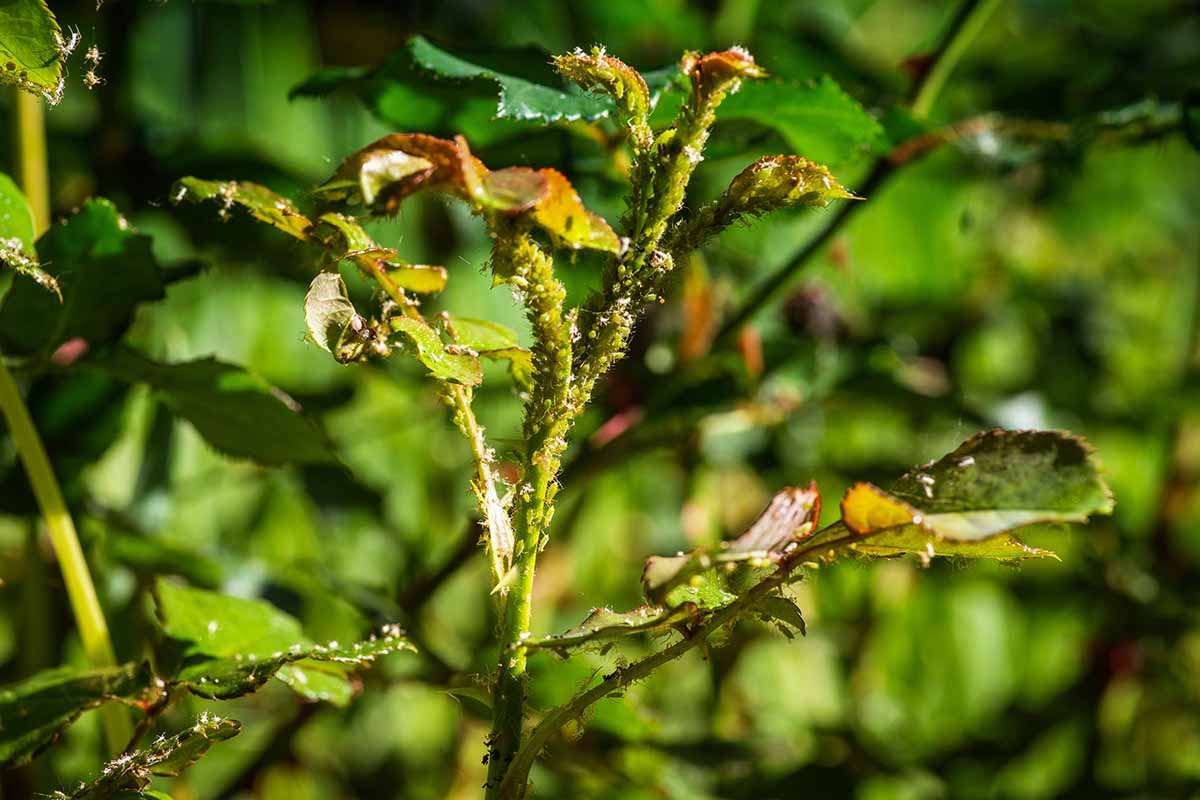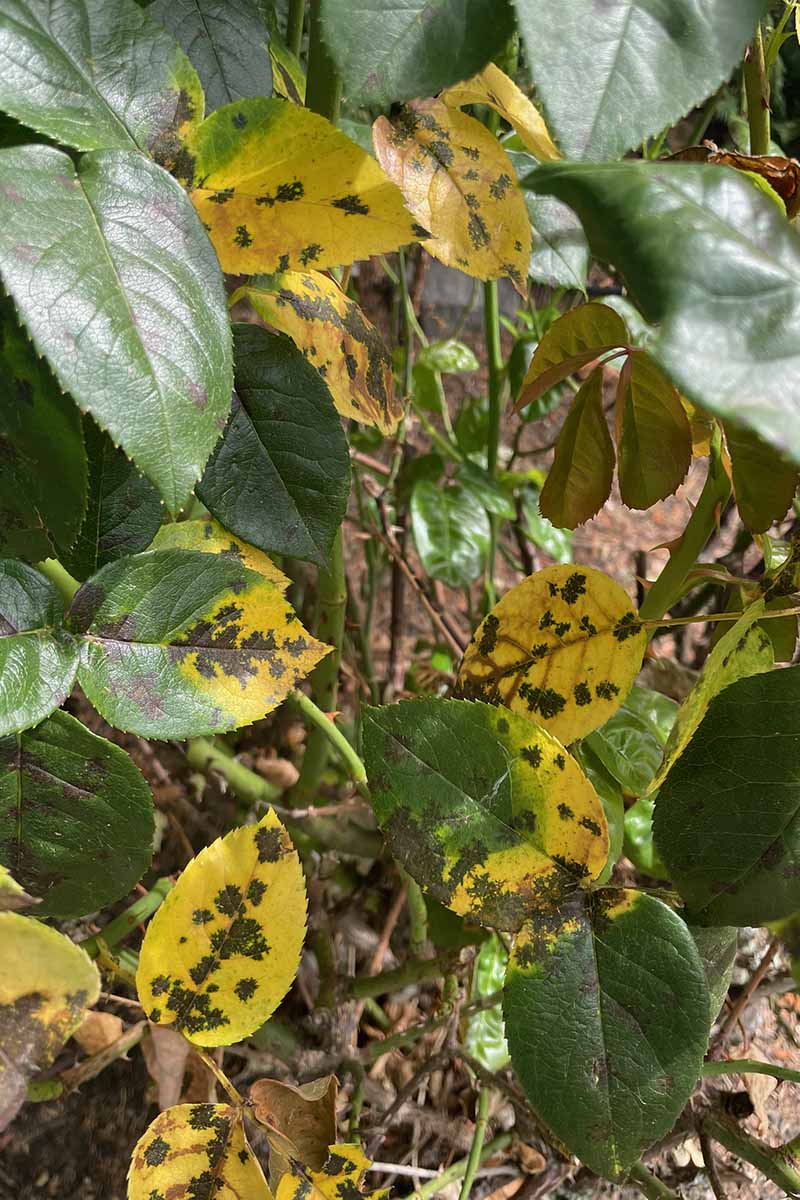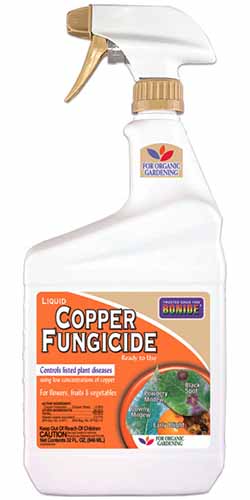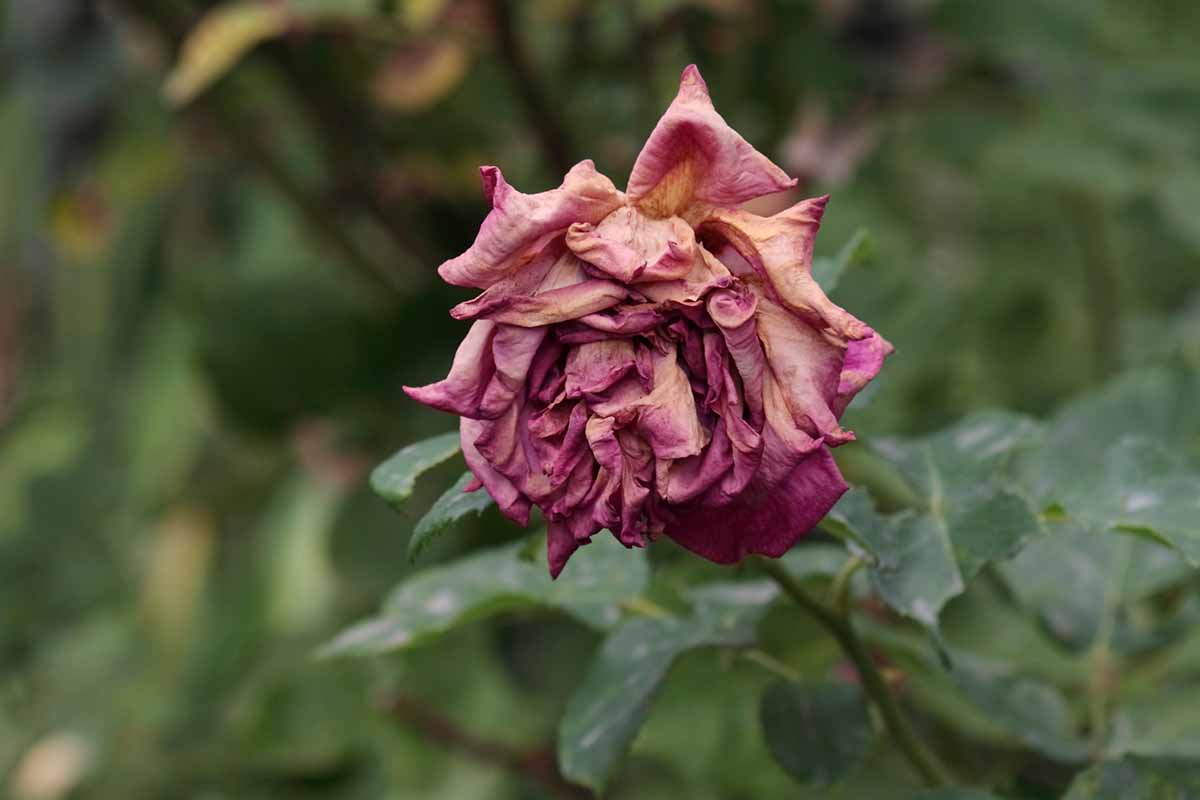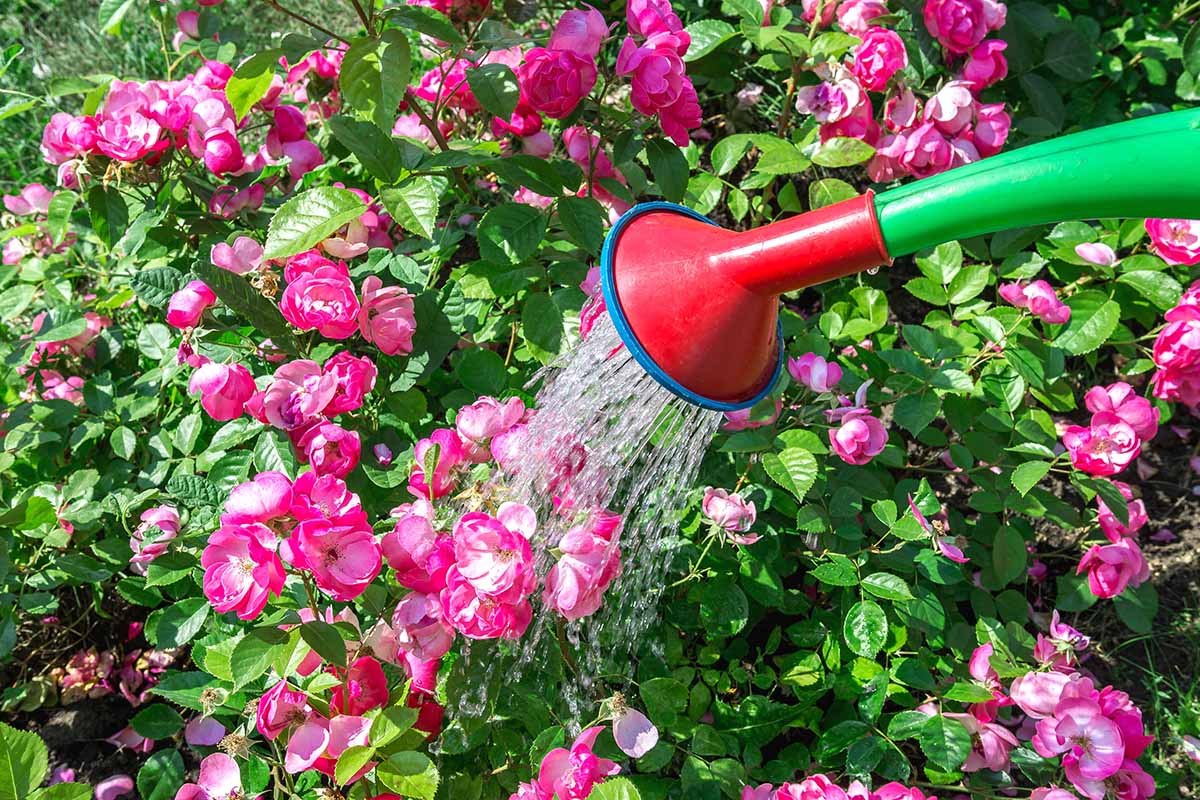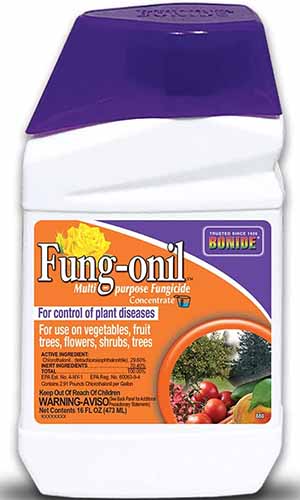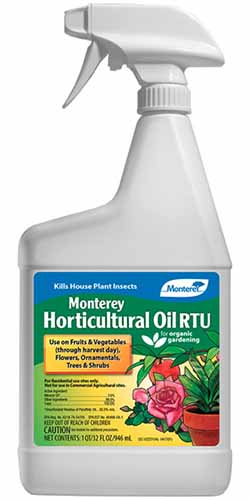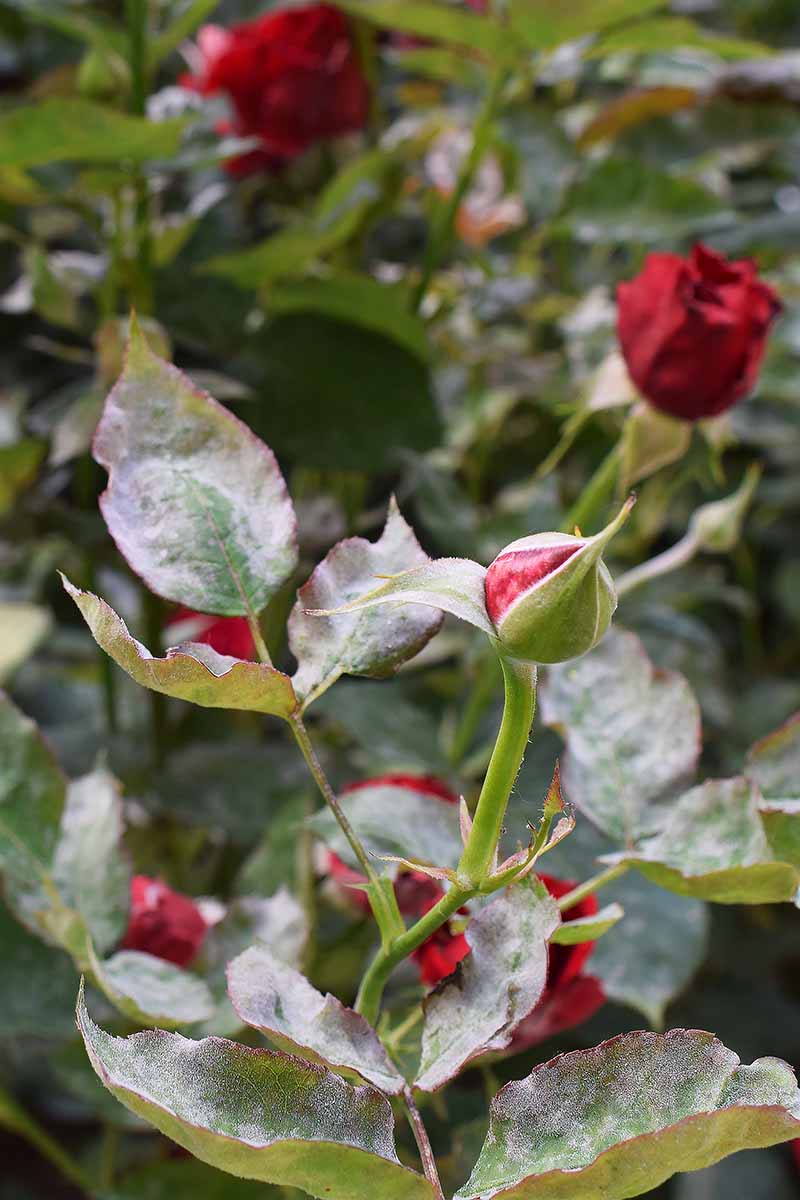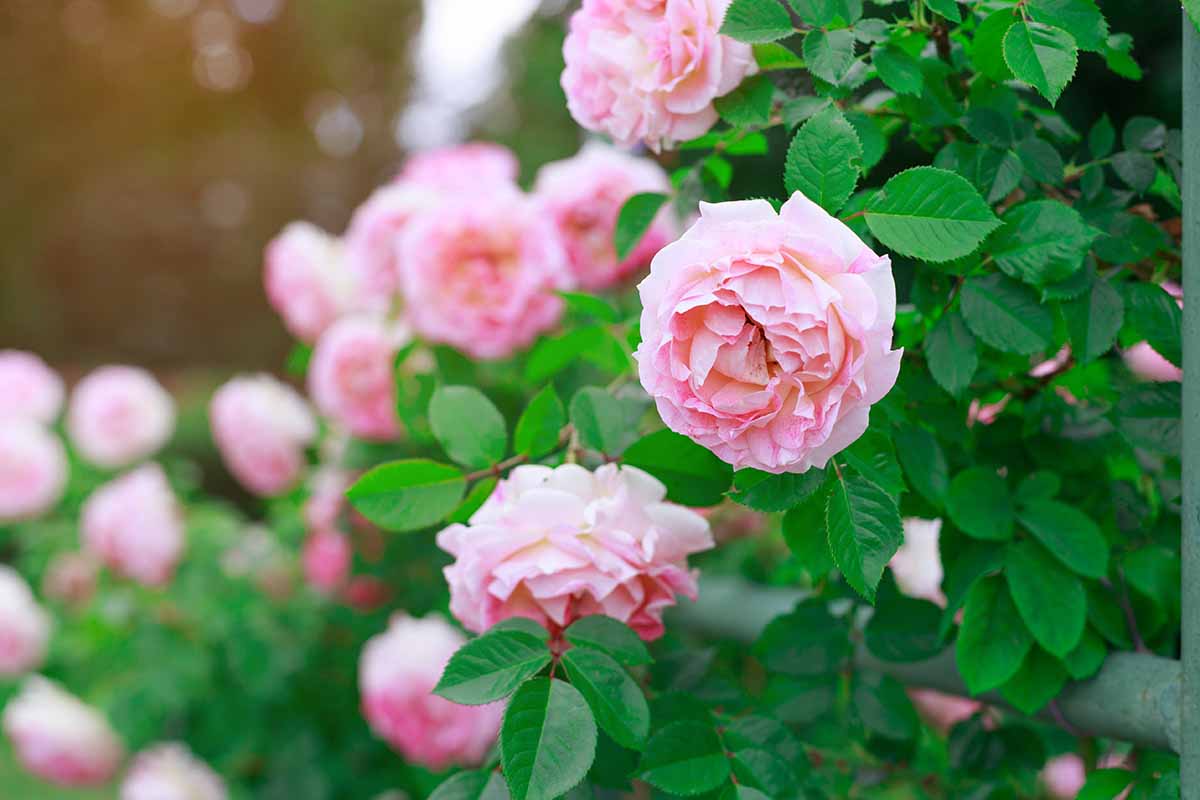Even if they aren’t as beautiful as the blossoms, those leaves are providing the plant with the nutrients it needs to make those hips and flowers. We need them to be present and healthy! We link to vendors to help you find relevant products. If you buy from one of our links, we may earn a commission. Figuring out the cause and acting quickly can mean the difference between a rose that recovers and one that meets an untimely end. Now, don’t get me wrong. A few leaves fluttering to the ground is no biggie. Lots of plants shrug off a bit of greenery to adapt to the changing environment around them and it’s nothing to worry about, whether that means a shift in sun exposure or a change in their water supply. But more than a handful, and it’s time to worry. Up ahead, we’ll go over the most common reasons for leaf drop in roses. Here’s what we’ll cover: In this guide, we’re talking about leaves falling prematurely in the spring or summer. Roses are deciduous and they drop all of their leaves in the fall or early winter as part of their normal life cycle.
1. Aphids
A handful of aphids are no big deal. Many types of plants will inevitably be visited by aphids at some point and it usually doesn’t cause serious trouble. But when an infestation becomes truly horrendous, serious problems such as yellowing and leaf drop occur. If you examine your roses often, it will go a long way toward helping you find the tiny insects before the problem becomes worse. In addition to clusters of aphids, look for the sticky substance they leave behind, called honeydew. This will make your plant almost look wet and debris will stick to it. It also attracts ants, as well as sooty mold. If you suspect an infestation is afoot, our guide to managing aphids on roses walks you through confirming your suspicions and reducing or even eliminating these pests.
2. Black Spot
Black spot is easily the most common disease of Rosa species in my neck of the woods, the Pacific Northwest. It’s less common to see a disease-free shrub than it is to see one with some level of spotting. This disease is less prevalent in other regions, but it’s still a frequent visitor to the garden. The fungus Diplocarpon rosae prefers wet, warm conditions. When it has what it wants, little black spots develop on the leaves of host plants. These expand to about half an inch in diameter and then a yellow color begins to develop on the surface of the leaves around the spots. A short while later, the leaves drop off. You’ll often see roses defoliated around the base. That’s the result of the fungus at work, as it starts on the upper surface of the lower leaves first. While you can plant resistant varieties, if you’re seeing leaf spots right now, that doesn’t help much. Remove any infected leaves and stems – look for red lesions on the canes. As the heat increases, plants dry out and their enzymatic reactions can slow or stop, causing leaf drop and even plant death. I can tell you from lots and lots of experience that the steps outlined above work wonders. I grab a bottle of trusty Bonide Liquid Copper Fungicide and get to work every other Sunday, on the dot. It quickly eradicates the problem and my roses are looking fabulous again in no time. Bonide Liquid Copper Fungicide Bonide Liquid Copper is available at Arbico Organics in 32-ounce ready to use, 16- or 32-ounce hose-end ready-to-spray, and 16-ounce concentrate bottles.
3. Extreme Heat
When temperatures climb above 90°F, it’s time to start thinking about heat tolerance and heat damage. Some roses just don’t do well in the heat – and boy, can I relate! As temperatures climb across the globe, this is going to become a more frequent issue. This slowing is known as heat dormancy, and this is usually the point where you’ll start to see foliage falling. Any flowers will also start to look wilted and will usually die. If the heat subsides, the plant will recover and send out new growth. Since roses generally have a good store of food available, they can last a while in dormancy. Keep them watered throughout the heat wave and wait for nature to do its thing. This is the one time when you can pretty much water to your heart’s content – at the soil line, not on the leaves! – and it won’t hurt. Within reason, of course… The heat causes rapid evaporation, which actually helps to cool the plant. Just don’t leave the shrub in a puddle of mud, and stop watering heavily once daytime temperatures drop back below 90°F. Now if only I could go dormant when it’s that hot out…
4. Lack of Water
Drought causes many types of plants to lose their leaves. This is the plant’s stress response, because those leaves require a lot of water to support and the plant can’t afford to supply them anymore. If you start to notice leaves dropping as the summer months heat up, this is often the cause, and heat stress and a lack of water often go hand in hand. You can tell for sure that this is the problem by sticking your finger into the soil up to your second knuckle. You should feel some moisture. If the soil feels bone dry, your roses need more water. Start watering more consistently and deeply so that just the top inch or two of soil dries out in between, and see if the leaves stop jumping ship and new foliage starts to form.
5. Rust
Nope, this is not the kind of rust that makes metal resemble Swiss cheese. Rust is actually a fungus in the plant world, and on roses, it’s caused by fungi in the genus Phragmidium. One of the most common symptoms is dropping leaves, so if you notice this happening, take a closer look. You’ll often notice little orange-bronze marks all over the foliage, though it starts on the underside, and sometimes you’ll spot it on the canes as well. These marks look suspiciously like metal rust, but they’re actually fungal spores. If you don’t address the infection during the growing season, the canes might turn black during the winter.
6. Spider Mites
Spider mites won’t cause leaf drop immediately. It takes time for them to cause enough damage that the foliage gives up the ghost. Copper fungicide is one option you might want to try, but you’ll want to alternate it with a second type of fungicide to be really effective. Bonide Fung-Onil Floribunda, musk, and shrub roses are all resistant to rust, so consider planting these if you run across this disease frequently and can’t seem to get a handle on it. At first, you’ll just see a little bit of stippling and maybe you’ll notice fine webbing all over the plant – though not all species spin webs. Left unchecked, especially if their natural enemies have been killed off with the application of broad-spectrum pesticides, the damage increases. The leaves start to turn brown, dry up, and then fall to the ground. On roses, the two-spotted (Tetranychus urticae), Pacific (T. pacificus), and strawberry (T. turkestani) spider mite are extremely common, but it doesn’t matter which species is attacking. Your control plan is going to be the same. Easily identified by its telltale powdery white coating, hence the name, if you notice this fungal issue on your plants, take swift action to prevent the problem from escalating. Go out there with the hose and spray the plants down every few days in the morning. If that’s not enough to do the job, spray the plant thoroughly with horticultural oil once every two weeks. Monterey Horticultural Oil Use something like Monterey’s Horticultural Oil, available at Arbico Organics in quart-size ready-to-spray containers, as well as concentrate in a variety of sizes. Learn more about spider mites and how to deal with them in our guide.
7. Powdery Mildew
Powdery mildew is common and infections can range from not even remotely a big deal to a huge, huge problem, depending on the severity. On the worse end of the scale, that’s when you’ll see foliage throwing itself to the ground. Our guide to identifying, preventing, and eliminating powdery mildew can help. Did this guide help you figure out what the problem was? I hope so! Let us know what the issue was and how you solved it in the comment section below. And feel free to ask away if you have any questions. To help you along your rose-growing journey, we have a few other helpful guides that are worth a look, including:
Growing Roses 101: Getting StartedHow to Identify and Correct Iron Deficiency in RosesHow to Grow Miniature Roses in ContainersHow and When to Prune Roses
